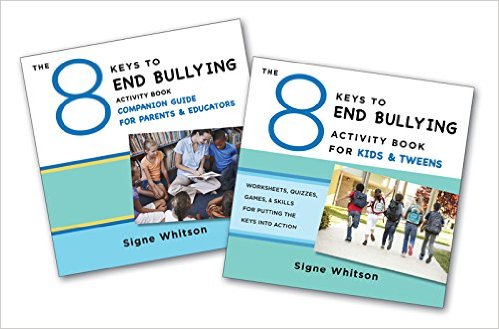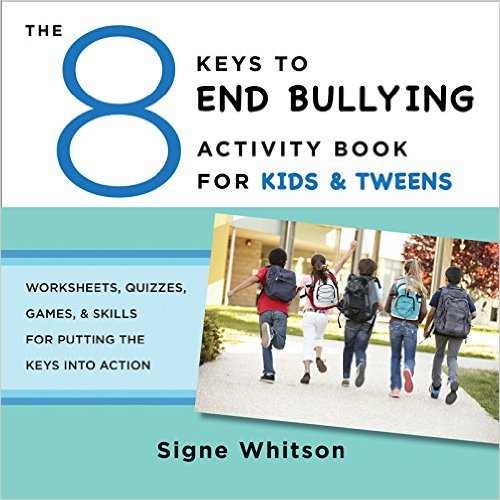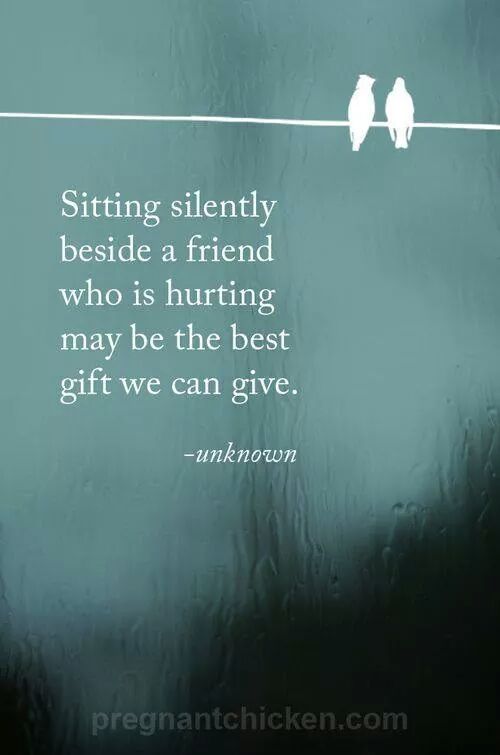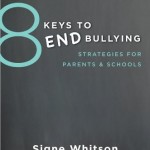Posts tagged stop bullying
Experts Share Tips to Stop Bullying in the Classroom
0I love to be included in this roundtable, offered through Study.com, alongside professionals like Michelle Borba and Dorothy Espelage. Hope some of our tips can be helpful to you as well!
https://study.com/teach/20-experts-on-eradicating-bullying-from-the-classroom.html
Best Articles about Bullying Prevention Strategies for Students
0In honor of October’s National Bullying Prevention month, here are 10 of my top posts on the topic of helping bring an end to bullying. Please share these links with professionals and parents who can use the information to support kiddos.
Is it Rude, Is it Mean, or Is It Bullying?
What Parents Can Do When Their Reports of Bullying are Downplayed by School
Helping Girls Cope with Bullying and Frenemies
What Parents Can Do When Their Kids’ Friendships End Badly
10 Guidelines for Stopping Cyberbullying
Why Kids Choose Not to Intervene in a Bullying Situation
What Girls Can Say and Do to Stand Up to Bullying
8 Things Kids Can Say and Do to Stop Bullying
What Adults Can Do to End Bullying
6 Simple Strategies to Stop Bullying
School-Based Bullying Prevention Programs
0What a wonderful day I spent at Immaculate Conception Cathedral School in Lake Charles, LA. yesterday! Here’s a few shots from our 5th/6th grade workshop, where the kids and I looked at key differences between rude, mean, and bullying behavior, then brainstormed helpful ways to respond to each.
Thanks also to the dedicated faculty and wonderful parents with whom I also got to share practical strategies for bringing an end to bullying.
To book your school-based event, click here. Now booking for Spring and Summer 2018.
8 Things Kids Can Say & Do to Stop Bullying
0My students tell me that one of the most frequently applied skills I teach them is the use of Bully Bans. Bully bans are short, to-the-point statements meant to interrupt an incident of bullying in its tracks without escalating the conflict. These practiced responses take into account that during stressful moments, kids’ brains rarely come up with “helpful” things to say. Rather, the heat-of-the-moment usually sparks emotionally-charged, conflict-fueling words and actions. Bully bans help turn this around. Find out more from my recent Psychology Today post, here:
Specific lesson plans for teaching Bully Bans to kids are featured in Friendship & Other Weapons: Group Activities to Teach Young Girls to Cope with Bullying.
What is Your ‘1 Thing’ to Stop Bullying?
0I just finished a fantastic run of Conference presentations and school visits, complete with 16 presentations to over 1,000 professionals, students, and parents. In each presentation, I talked about the power of 1 genuine compliment, 1 warm smile, 1 reassuring hug, 1 kind text, 1 choice to eat lunch with a person who would otherwise eat alone…and so many other simple “1 Things” that kids can do to reach out, show kindness, and make an important different to someone who is on the receiving end of cruelty or bullying. This Psychology Today post by Pamela Paresky highlights the power of the peer group and the positive ways that social capital can be spent on helping others:
Bigger Than The Playground: Dealing With Cyberbullies After The Big Move (Guest Post)
0Today, I share a Guest Post from Laura Pearson, a Mom who writes about her experiences supporting her son after the family’s move to a new town:
Moving to a new town and attending a new school can be one of the hardest things your child will experience before entering adulthood. They will have to leave all of their friends, teachers and familiar places behind before completely readjusting to something new.
An article published by Psychology Today claims that children who have recently moved can exhibit poor performance in school, bad behavior, drug abuse, and many other maladies. On top of all of that, things like cyberbullying the “new kid” can be rampant.
According to the Cyberbullying Research Center, nearly 28 percent of middle schoolers and high schoolers experienced cyberbullying between May of 2007 and August of 2016. PBS reports that nearly 1 in 3 kids say they’ve experienced cyberbullying.
But what exactly is cyberbullying, anyway?
According to the National Crime Prevention Council (NCPC), cyber bullying is similar to other types of bullying, except that it takes place online over emails and text messages. Some examples of cyberbullying include: sending someone mean or threatening emails, instant messages or text messages; tricking someone into revealing personal information and sending it to others; and creating a website to make fun of another person. Unlike in-person bullying, cyberbullying can take place 24 hours a day, even when your child is alone.
A 2015 article by Scientific American confirmed a direct correlation between cyberbullying and an increased likelihood of depression among children. There have even been instances in the news where a child was cyber bullied to such an extent that they took their own lives.
So what can we do to help our child if they are being cyber bullied?
For parents, it is important to know what sites your child is visiting and to understand who they are interacting with. According to stopbullying.gov, this is the first step for parents to take in order to prevent cyberbullying before it starts. Establishing rules with your children about what sites they visit and what activities they engage in can help eliminate potentially harmful conditions.
The best thing for your child to do if they are being cyber bullied is to not respond to the attacks of a cyber bully and to block them using the privacy features of your E-Mail or messaging. Any response to the bully from your child can be easily circulated and prolong the confrontation. Be sure to save all bullying emails and texts, and send them to your Internet Service Provider (ISP). Remember that bullying and cyberbullying can be a crime if they are threatened with violence or harassed based on their gender or race. Although technology provides another avenue for children to be bullied, it also provides accurate records and features that can yield an effective defense against it, legally or otherwise.
It is also beneficial to create a stress-free home environment for your child if they are experiencing cyber bullying, especially after moving to a new place. Start off by creating stability in your new home that your child can come to rely on, such as a weekly game nights or pizza every Friday. Try to de-clutter your home environment and make it organized so that your child knows where everything is if they need it. It is also helpful to foster clear and loving communication with your child in your home so that they know they have a safe haven from any sort of bullying or negativity, and so that they can share with you when something is wrong. In many instances, children will feel embarrassed and not want to share the fact that they are being bullied.
By being aware of your child’s online activity and having open communication about what to do if they are being bullied online, parents can help their children thrive after moving to a new town or city.
For more information, please visit Laura Pearson at Edutude.net or email her: laura@edutude.net
How to Listen so that Kids Will Talk About Bullying
0Ok, friends, so, go easy on me! This is my first YouTube video. I can comfortably stand in front of a group of 1,000 people and talk about how to help young people understand and manage bullying…but recording myself on video is a WHOLE. DIFFERENT. STORY. Like, terrifying!
Here’s the thing; last Spring, I made myself a goal of posting some videos of my 8 Keys to End Bullying training excerpts. I wrote that goal down and now, true to my Type-A-personality form, I have to follow through. Here’s my first attempt! Let me know what you think (but only the good things of course because cyberbullying a Bullying Prevention speaker would be totally not cool.)
And if you want to hear more of what I have to say or have me say it LIVE and in person (so much preferred!), check out my Workshops & Speaking page or email me at signe@signewhitson.com
Here it is: How to Listen so that Kids Will Talk About Bullying, featuring 5 steps for helping your young person feel safe enough and supported to come to you when he/she is facing peer conflict and/or bullying.
Thanks for watching!
A Simple Hello Can Transform a Student’s School Experience
0In 8 Keys to End Bullying: Strategies for Parents & Schools, I tell a real-life story of a 9-year old student who came to me on her second day of school and told me, in a voice that I can only describe as gleeful, that her teacher really liked her. When I asked her how she could tell, she explained:
She smiles at me every day when I walk into her room. It’s so different from my teacher last year. She was always doing work and never even looked up before the second bell, except to remind us of anything we were doing wrong. I think the teacher this year really likes me!
A series of twirls and joyful shrieks later, it was plain to see how something as simple and brief as a warm acknowledgement from a teacher meant the world to that student. To quote Jerry Maguire, the teacher “had her at hello.”
Connections heal and more times that I can count, it is the “little things” like the personal greeting at the door or the smile across the lunch room that go the longest way in making kids feel valued in a school setting.
That’s why this story, featured yesterday on ABC’s Good Morning America, really caught my eye. Please watch and enjoy!
New Reviews are In for the 8 Keys to End Bullying Activity Book
0
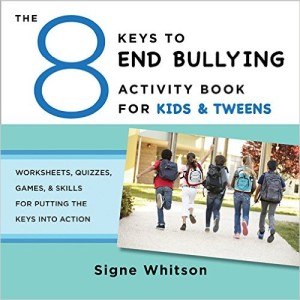 “A needed topic in a great format. It is an Activity Book and more! The author uses a variety of methods to communicate her key points. Drawing for the artist, writing for the wordsmith, up and at ’em for the active learner. Each key has a checkpoint (post test) to determine comprehension. The stories use culturally relevant names and situations which I find helpful working with the population I do. I especially like Key 6,Be Known For Being Kind, which give 10 things to say and do to stop bullying. New ideas allow for independent thinking and actions and it doesn’t even list “tell an adult” which most kids say doesn’t work. Thanks, Ms. Whitson for a great resource.”
“A needed topic in a great format. It is an Activity Book and more! The author uses a variety of methods to communicate her key points. Drawing for the artist, writing for the wordsmith, up and at ’em for the active learner. Each key has a checkpoint (post test) to determine comprehension. The stories use culturally relevant names and situations which I find helpful working with the population I do. I especially like Key 6,Be Known For Being Kind, which give 10 things to say and do to stop bullying. New ideas allow for independent thinking and actions and it doesn’t even list “tell an adult” which most kids say doesn’t work. Thanks, Ms. Whitson for a great resource.”
The activities are fun to do and I couldn’t wait to see what was coming next. After I completed the 8 Keys I really wanted to get rid of bullying at my school. I learned what bullying is and things I can do to stop it.” (Ashlyn, age 11)
“Signe Whitson continues to be one of the most dynamic leaders in bullying education and crisis intervention among youth. These interactive guides for students, parents, and educators provide the hands-on tools to help kids and tweens cope wisely with real-life situations, both offline and online. These workbooks are full of engaging and collaborative games, worksheets, and thought-provoking activities that will stay with your child longer than simply reading a book. Whitson’s activity program allows you to get involved with your child on both an emotional level and an educational one―these are definitely two books you must reach out and buy.” (Sue Scheff, Parent Advocate, Internet Safety Expert and author of Shame Nation)
“Well-organized and easily relatable, this workbook and companion guide will help kids understand categories of aggressive behaviors―such as how rude, mean, and bullying behaviors differ―and teach them to treat others with respect and kindness. Bravo for a fun, accessible anti-bullying activity program!” (Carrie Goldman, award-winning author of Bullied: What Every Parent, Teacher, and Kid Needs to Know About Ending the Cycle of Fear)
“Signe Whitson continues to provide value that very few do: a detailed approach that offers tools and skill-building for young people in an action-based training format. This is the only way to impact one of our toughest issues that all people face: bullying. An amazing resource for educators and parents, with proven strategies to fight bullying situations.” (Jason Spector, Veteran Physical Educator and Coach, Co-Founder of Sweethearts and Heroes Anti-Bullying Program, father of two)
Thanks, all, for your kind words and great feedback! If you have not uploaded our review yet, please do so at https://www.amazon.com/Keys-Bullying-Activity-Book-Tweens/dp/0393711803/ref=pd_bxgy_14_img_2?_encoding=UTF8&pd_rd_i=0393711803&pd_rd_r=ZNTF9NXEC95WBS47H7CM&pd_rd_w=x1GW6&pd_rd_wg=jFlBe&psc=1&refRID=ZNTF9NXEC95WBS47H7CM
Fun Activity Helps Kids Tell the Difference Between Bullying and Other Forms of Conflict & Aggression
0In my book, 8 Keys to End Bullying: Strategies for Parents & Schools and in this article featured online in Psychology Today, I make a distinction between behaviors that are rude, behaviors that are mean, and 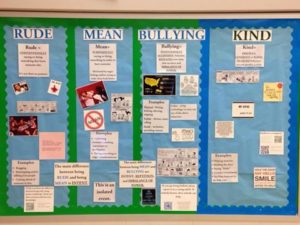 behaviors that are true examples of bullying. I explain why it is critical that parents and professionals are able to discern the differences between these troubling behaviors and explain the risks of lumping all bad behaviors under the bullying umbrella.
behaviors that are true examples of bullying. I explain why it is critical that parents and professionals are able to discern the differences between these troubling behaviors and explain the risks of lumping all bad behaviors under the bullying umbrella.
I created the activity below for educators, counselors. social workers, school psychologists, youth workers and parents to use with kids to help them learn and integrate behavioral definitions of rude, mean, and bullying. Please feel free to use this activity with the young people in your life to teach them about the key distinctions between these three behaviors. (I do ask that you include my name and contact information if you make photocopies of this activity or use it in any type of presentation.
ACTIVITY: Is it Rude, Is it Mean, or Is it Bullying?
After reviewing the distinctions between rude, mean, and bullying behavior (below), read the following scenarios aloud to kids. Challenge kids to move to a designated section in the room if the behavior represents bullying, to a different section if the behavior demonstrates meanness, and to a third section if the behavior is considered rude. Allow kids time to discuss why they chose to stand in a particular section, encouraging personal examples and reflection, as appropriate. An Answer Key is provided to guide your discussion.
DEFINITIONS:
Rude = Accidentally saying or doing something hurtful.
Rude behaviors include:
- Burping in someone’s face
- Butting in line
- Bragging about making a team
Rude behaviors are usually thoughtless and ill-mannered, but not meant to actually hurt someone else.
Mean = Saying or doing something to hurt a person on purpose, once or maybe twice.
The main difference between “rude” and “mean” behavior is that rudeness is usually unplanned. Mean behavior, on the other hand, is done on purpose.
Mean behaviors include:
- Making fun of what someone looks like or what they are wearing
- I don’t like your short hair. You look like a boy.
- Why did you wear that dress?
- Insulting someone’s intelligence or ability
- You’re so stupid.
- You stink at soccer.
- Saying or doing something unkind after a fight with a friend.
- Saying, “I hate you.”
- Taking something that doesn’t belong to you.
Make no mistake; mean behaviors are very hurtful and should be avoided at all times! Still, meanness is different from bullying in important ways that we’ll talk about next.
Bullying = Cruel behavior, done on purpose and repeated over time, that involves an imbalance of power.
To best understand bullying, remember the 3 P’s:
- It is done on Purpose; there is nothing “accidental” or unplanned about bullying
- It is a Pattern; the cruelty happens over and over again
- It is all about Power; the cruel person has more control and influence than his/her target
Kids who bully say or do something purposefully hurtful to others and they keep doing it again and again, with no sense of guilt or shame. Kids who bully have more power than the kids they pick on. This power may come from being older, stronger, or bigger in size or it may come from getting several kids to gang up on one target, to make that target feel hurt and alone.
SCENARIOS:
- Kayla tells MacKenzie that she can’t sit with her on the bus today because she is saving the seat for a girl from her Social Studies class.
- Lucas tells Damien that he can’t play with the Legos because he is the worst builder in the whole first grade.
- Talia makes plans to go to the school dance with her new friend, Gwen. Katie tells Talia that if she hangs out at the dance with Gwen that everyone will think she is a total weirdo and no one will like her anymore. At lunch that day, Katie convinces everyone that it would be a really funny joke to all laugh out loud when Talia approached the lunch table.
- Devin and David are friends. In school, they had an argument. Devin called David a name and David shoved him out of his way.
- Maggie is making fun of the fact that Jessie hangs out with the boys at recess and wears long basketball shorts to school every day. In gym class, Maggie told her to go play on the boys’ team and the day before in homeroom, she wrote the words “You’re so gay” on Jessie’s desk.
- Brady told JP he would beat him up if he touched his cars, then shoved JP out of his way. During math class, he threw a spitball at JP and kicked his chair out from under him. He threatened to punch JP if JP told the teacher.
- Emma and Brit play on the same field hockey team and are normally best friends, but have been in an argument for three days. Emma called Brit a mean name after practice and Brit send Emma a mean text.
ANSWER KEY
- Kayla & MacKenzie: Kayla is being rude, but here is no evidence of intentional meanness, repetitive behavior or a power imbalance.
- Lucas & Damien: Lucas is being mean. It appears that his words are intended to hurt Damien. There is no evidence of repetitive behavior or a power imbalance, however.
- Talia & Katie: Katie is acting like a bully. She has creating an unfair balance of power by getting all of the girls at the lunch table to laugh at Talia. She is also using words like “everyone” and “no one” to threaten Talia about how she will be socially excluded if she does not do what Katie wants her to do.
- Devin & David: Devin and David are engaging in rough play, or rude behavior. This is not bullying because the boys are usually friends, the power balance is relatively equal and the boys are not intending to harm each other.
- Maggie & Jessie: Maggie is acting like a bully. She is making fun of Jessie repeatedly, with intention to cause harm. Slurs based on sexual orientation are particularly cruel for young people and should be taken seriously by adults wishing to create a positive school culture.
- Brady & JP: Brady is acting like a bully. He is engaging in repetitive cruel behavior, designed to hurt JP. He is using intimidation and threats to create a power imbalance.
- Emma & Brit: Emma and Brit are being mean to each other. They are intending to hurt each other with their words and texts. The girls are normally friends, though, and at this point, this appears to be a mutual argument rather than a repetitive pattern of one-sided cruelty.
If you know a young person who would benefit from exploring the distinctions between rude, mean, and bullying and/or who would like to learn skills for managing conflict and bullying check out the 8 Keys to End Bullying Activity Book for Kids & Tweens. This book (and Companion Guide, sold separately or as a set) provides dozens of worksheets, quizzes, activities, puzzles, and skill-building games to teach these concepts and much, much more. Check it out here!
